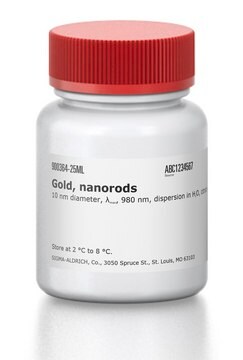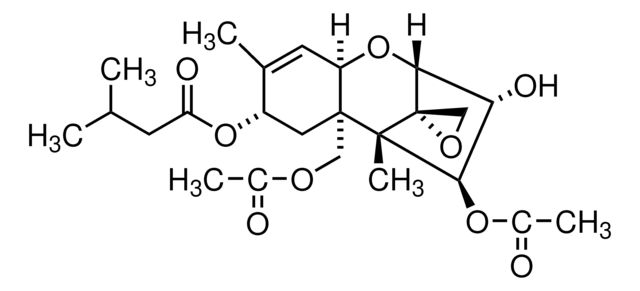C1017
Citrinin
from Penicillium citrinum, ≥98% (HPLC), powder, mycotoxin
Synonyme(s) :
(3R,4S)-8-Hydroxy-3,4,5-Trimethyl-6-Oxo-4,6-Dihydro-3H-Isochromene-7-Carboxylic Acid, 4,6-Dihydro-8-hydroxy-3,4,5-trimethyl-6-oxo-3H-2-benzopyran-7-carboxylic acid
About This Item
Produits recommandés
product name
Citrinin, from Penicillium citrinum, ≥98% (HPLC)
Source biologique
Penicillium citrinum
Niveau de qualité
Pureté
≥98% (HPLC)
Forme
powder
Température de stockage
2-8°C
Chaîne SMILES
C[C@H]1OC=C2C(O)=C(C(O)=O)C(=O)C(C)=C2[C@@H]1C
InChI
1S/C13H14O5/c1-5-7(3)18-4-8-9(5)6(2)11(14)10(12(8)15)13(16)17/h4-5,7,15H,1-3H3,(H,16,17)/t5-,7-/m1/s1
Clé InChI
CQIUKKVOEOPUDV-IYSWYEEDSA-N
Vous recherchez des produits similaires ? Visite Guide de comparaison des produits
Description générale
Application
- a standard for calibration curve preparation for citrinin quantification Monascus purpureus ATCC 36928
- an internal standard in thin layer chromatography (TLC) for characterizing the citrinin from Aspergillus and Penicillium strains
- standard to characterize citrinin for rotten apples TLC
Actions biochimiques/physiologiques
Mention d'avertissement
Danger
Mentions de danger
Conseils de prudence
Classification des risques
Acute Tox. 3 Dermal - Acute Tox. 3 Inhalation - Acute Tox. 3 Oral - Carc. 2
Code de la classe de stockage
6.1C - Combustible acute toxic Cat.3 / toxic compounds or compounds which causing chronic effects
Classe de danger pour l'eau (WGK)
WGK 3
Équipement de protection individuelle
Eyeshields, Faceshields, Gloves, type P3 (EN 143) respirator cartridges
Certificats d'analyse (COA)
Recherchez un Certificats d'analyse (COA) en saisissant le numéro de lot du produit. Les numéros de lot figurent sur l'étiquette du produit après les mots "Lot" ou "Batch".
Déjà en possession de ce produit ?
Retrouvez la documentation relative aux produits que vous avez récemment achetés dans la Bibliothèque de documents.
Les clients ont également consulté
Notre équipe de scientifiques dispose d'une expérience dans tous les secteurs de la recherche, notamment en sciences de la vie, science des matériaux, synthèse chimique, chromatographie, analyse et dans de nombreux autres domaines..
Contacter notre Service technique












